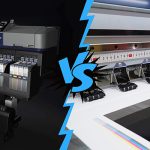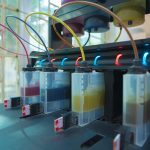The universe is known for its ability to undergo many physical and chemical processes to keep its balance and manage life on earth. Hence, these changes are absolutely essential to keep the breathing creatures alive. Hence, general chemistry becomes inevitable for people to understand to make sense of the changes that are undergoing.
Two such processes are evaporation and sublimation heat transfer process, which are often confused by students. Although both of them are endothermic reactions, there still lie considerable differences you need to know to pass the exam. Here are some common differences between evaporation and sublimation that can guide you to get conceptual clarity and understand the mechanism of the state of matter.
What is the Difference Between Evaporation and Sublimation?
Table of Contents
What is Sublimation?
Sublimation can be defined as the transition of matter from solid to gas (with no liquid state). Similarly, the molecules are transforming the chemical bonds of the material and releasing them into the air. Hence, as it requires a large amount of energy, this entire process is endothermic. Also, the energy in this process is calculated as enthalpy.
Another point important to consider here is that it occurs at low pressure and temperature (the triple point of the substance), making the process fast enough. This is primarily because as the temperature increases, the solid immediately changes its direction to a gas. Here, an example of this process would be turning dry ice into gas carbon dioxide.
What is Evaporation?
In simple words, evaporation is defined as the transfer of liquid matter into a gaseous state. This is an example of an endothermic process where all the intermolecular forces are in play and these are broken down into the vapors. Likewise, the process is directly proportional to the temperature. Thereby, to start the process, you will have to increase the overall heat. Here are some factors that influence the process of evaporation;
• Large surface area is needed for the operation of the process.
• High concentration of air can disturb the evaporation process.
• A high flow of air increases the speed of evaporation.
• If the intermolecular forces are stronger in the process, the enthalpy of the evaporation is high.
Sublimation vs. evaporation
Here are some key differences between vaporization and sublimation;
• In the process of sublimation, the solid-state changes into the gaseous state, and hence, there is no liquid matter state. In contrast, the evaporation process undergoes contrasting stages of matter, from liquid to gas.
• In the sublimation process, the initial phase of the matter is solid. In contrast, the initial stage is liquid in the evaporation process.
• The sublimation process has all the energy emission that is required to start the process. On the other hand, the evaporation process only gives the enthalpy that is needed for the entire procedure.
• In the sublimation process, the phase change occurs from the solid stage to the gas at low pressure and temperature (it is preferred to keep it below the triple point of the substance). On the contrary, in the evaporation process, the phase occurs from liquid to gas on the surface of the liquid with a reasonable temperature range.
• An example of the sublimation process is naphthalene while the evaporation process is the transfer of liquid water into vapors. Now you can easily understand what is the difference between evaporation and sublimation.
FAQs
Final Thoughts
Now hopefully you have got the Difference between Evaporation and Sublimation. In the end, matter exists in different forms that undergo considerable changes, making the observers confused and puzzled for the most part. These changes are the results of the chemical and physical reactions naturally occurring on the earth. Such are the processes of evaporation and sublimation that are being misinterpreted by many. This is primarily because both these changes are endothermic. Yet, don’t worry as this guide on sublimation vs. evaporation can help you get conceptual clarity.





